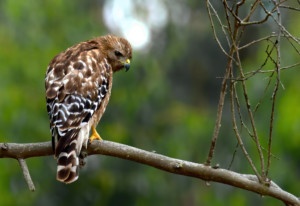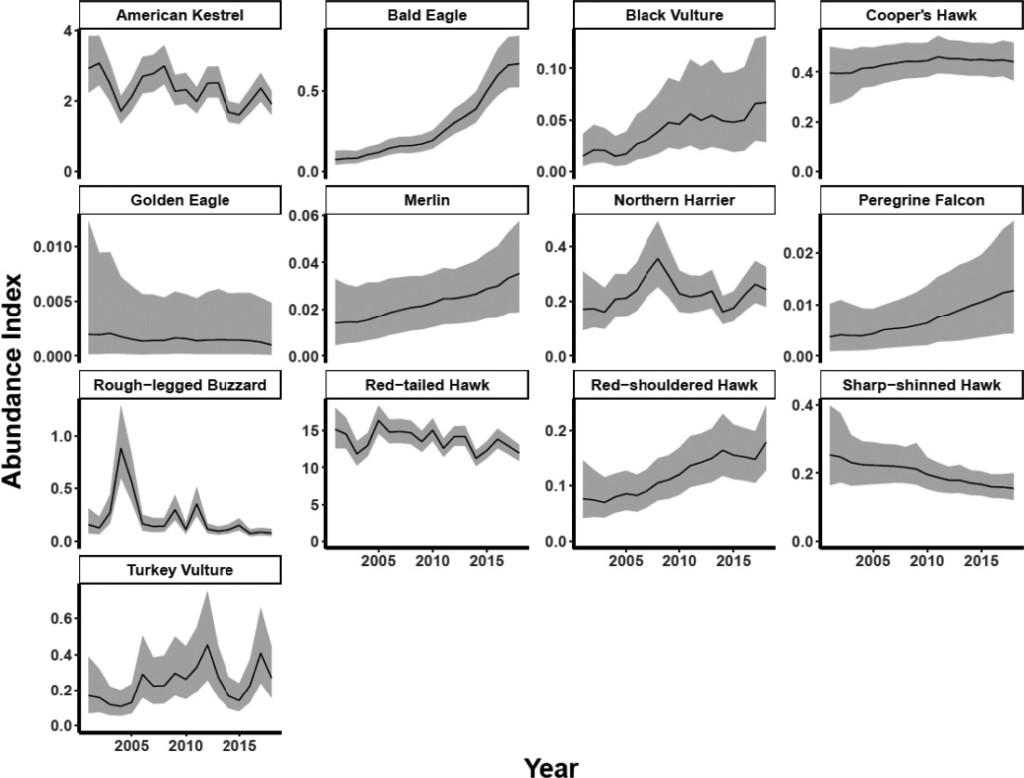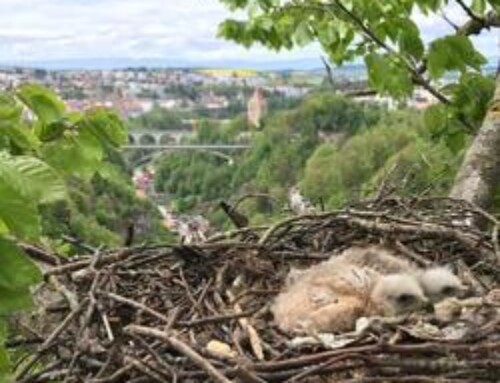 LINKED PAPER
LINKED PAPER
Yearly temperature fluctuations and survey speed influence road counts of wintering raptors. McClure, C. J., Rolek, B. W., Grove, G. W., & Katzner, T. E. 2021. IBIS. DOI: 10.1111/ibi.12914. VIEW
While driving along the highway, I tend to keep an eye out for birds of prey. From time to time, I will spot a Common Buzzard (Buteo buteo) casually sitting on a pole or a Common Kestrel (Falco tinnunculus) hovering above the road. My sightings are mostly haphazard, but when done systematically on a year-to-year basis, road counts of raptors can provide important information on long-term population trends. For example, data from road counts contributed to the discovery that vultures were declining in Africa (Ogada et al. 2016) and Asia (Prakash et al. 2003). In another recent study, a team of American ornithologists analyzed data from the Pennsylvania Winter Raptor Survey to monitor the population dynamics of several North American raptors.
Citizen Science
The Winter Raptor Survey is managed by the Pennsylvania Society for Ornithology, which mobilizes numerous community scientists to survey several roads. Between 15 January and 15 February, these birdwatchers count all raptors while driving along a fixed route. This survey was conducted from 2001 to 2018 and resulted in an impressive dataset with more than 85,000 individual sightings representing 14 raptor species. Using these data in a dynamic population model, the researchers were able to estimate population fluctuations for several species. Bald Eagle (Haliaeetus leucocephalus), Red-shouldered Hawk (Buteo lineatus) and Black Vulture (Coragyps atratus) showed a clear increase in abundance during the survey period. These findings are consistent with other studies on these species (Watts et al. 2008, Farmer et al. 2008), highlighting the reliability of road counts to monitor populations.

Figure 1. Abundance indices based on road count data of wintering raptors in Pennsylvania. The estimates are depicted as averages (black lines) and 95% credible intervals (grey shading).
Driving speed
Some species showed large fluctuations in abundance which coincided with changes in winter temperatures, namely American Kestrel (Falco sparverius), Red-tailed Hawk (Buteo jamaicensis), Rough-legged Buzzard (Buteo lagopus) and Turkey Vulture (Cathartes aura). Given that all these species are partially or fully migratory, these patterns probably reflect species-specific changes in migratory behavior in response to different weather conditions. Finally, the researchers noted a clear relationship between driving speed and number of counted individuals. Although they could not determine an optimal driving speed for road counts, the general and intuitive rule appears to be ‘slower is better’ (McClure et al. 2021). A reasonable recommendation, although I would not recommend spotting raptors at 40 km/h on the highway.
References
Farmer, C.J., Goodrich, L.J., Inzunza, E.R. & Smith, J.P. (2008). Conservation status of North America’s birds of prey. State of North America’s birds of prey. Series in Ornithology 3: 303– 420. VIEW
McClure, C. J. W., Carignan, A. & Buij, R. (2021). Lack of standardization in the use of road counts for surveying raptors. The Condor 123: duaa061. VIEW
Ogada, D.L., Shaw, P., Beyers, R.L., Buij, R., Murn, C., Thiollay, J.M., Beale, C.M., Holdo, R.M., Pomeroy, D., Baker, N., Krüger, S.C., Botha, A., Virani, M.Z., Monadjem, A. & Sinclair, A.R.E. (2016). Another continental vulture crisis: Africa’s vultures collapsing toward extinction. Conservation Letters 9: 89– 97. VIEW
Prakash, V., Pain, D.J., Cunningham, A.A., Donald, P.F., Prakash, N., Verma, A., Gargi, R., Sivakumar, S. & Rahmani, A.R. (2003). Catastrophic collapse of Indian White-backed Gyps bengalensis and Long-billed Gyps indicus Vulture populations. Biological Conservation 109: 381– 390. VIEW
Watts, B.D., Therres, G.D. & Byrd, M.A. (2008). Recovery of the Chesapeake Bay Bald Eagle nesting population. Journal of Wildlife Management 75: 152– 158. VIEW
Image credits
Top right: Red-shouldered Hawk (Buteo lineatus) | Steve Colwell | CC BY-SA 2.0 Wikimedia Commons
Blog posts express the views of the individual author(s) and not those of the BOU.
If you want to write about your research in #theBOUblog, then please see here




